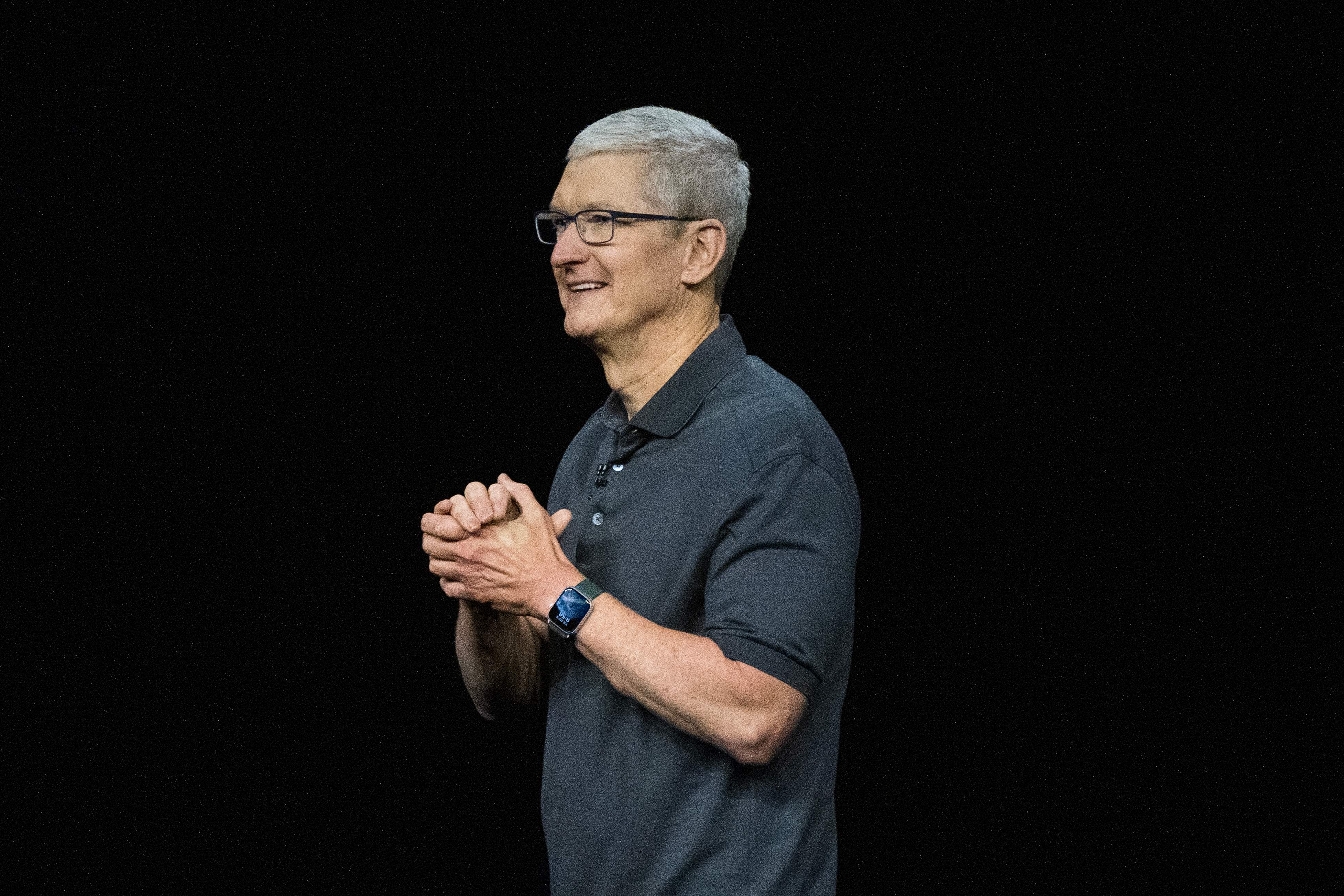Andrew Forrest Vs. Rio Tinto: A Clash Over The Future Of The Pilbara

Table of Contents
Andrew Forrest's Concerns Regarding the Pilbara's Future
Andrew Forrest, a prominent Australian businessman and philanthropist, has been a vocal critic of Rio Tinto's operations in the Pilbara. His concerns center around two key areas: environmental stewardship and equitable economic development.
Environmental Stewardship
Forrest's most significant criticism revolves around Rio Tinto's environmental record in the Pilbara. The devastating destruction of the Juukan Gorge rock shelters in 2020, a site of significant cultural importance to the Puutu Kunti Kurrama and Pinikura (PKKP) people, serves as a stark example of the concerns raised. This incident, along with other instances of alleged environmental damage, has fueled Forrest’s calls for more stringent environmental protection measures and a greater respect for indigenous land rights.
- Juukan Gorge: The destruction highlighted a failure in consultation and highlighted the need for more robust processes to protect culturally significant sites.
- Sustainable Mining Practices: Forrest advocates for a complete overhaul of mining practices in the Pilbara, promoting sustainable mining techniques that minimize environmental impact and prioritize biodiversity conservation.
- Indigenous Land Rights: He champions the rights of indigenous communities and calls for meaningful consultation and benefit-sharing agreements regarding resource extraction on their traditional lands. This includes ensuring the appropriate compensation and involvement in decision-making processes.
Economic Development and Benefit Sharing
Beyond environmental concerns, Forrest argues that the economic benefits derived from the Pilbara's iron ore boom haven't been fairly distributed. He contends that local communities and indigenous people haven't received their fair share of the wealth generated, advocating for alternative economic models that prioritize community development and indigenous economic empowerment.
- Fair Distribution of Wealth: Forrest proposes mechanisms to ensure a more equitable distribution of profits, including royalties and investment in local infrastructure and businesses.
- Community Development: He pushes for significant investment in education, health, and other essential services for Pilbara communities.
- Indigenous Economic Empowerment: Forrest advocates for programs that create economic opportunities for indigenous people, fostering self-sufficiency and participation in the region's economic growth.
Rio Tinto's Position and Response
Rio Tinto, in response to Forrest's criticisms, defends its environmental practices and highlights its economic contributions to the Pilbara and Australia.
Defense of Mining Practices
Rio Tinto maintains its commitment to responsible mining, asserting that its operations adhere to environmental regulations and incorporate numerous sustainability initiatives. The company points to investments in environmental remediation projects, water management strategies, and biodiversity conservation programs as evidence of its commitment to minimizing environmental impact.
- Environmental Regulations: Rio Tinto emphasizes its compliance with all relevant Australian and international environmental regulations.
- Sustainability Initiatives: The company highlights investments in renewable energy, emissions reduction technologies, and habitat restoration projects.
- Remediation Efforts: Rio Tinto details its ongoing efforts to rehabilitate mined areas and mitigate the environmental footprint of its operations.
Economic Contributions and Development
Rio Tinto emphasizes its substantial economic contribution to the Pilbara and Australia. This includes substantial tax revenue, job creation, and significant investments in infrastructure development.
- Job Creation: Rio Tinto highlights the numerous direct and indirect employment opportunities created by its operations.
- Tax Revenue: The company emphasizes its substantial contribution to government revenue through taxes and royalties.
- Infrastructure Development: Rio Tinto points to its investments in roads, railways, ports, and other infrastructure crucial for the Pilbara's development.
The Broader Implications of the Conflict
The Andrew Forrest vs. Rio Tinto conflict has far-reaching implications for the Pilbara's future, impacting both its ecosystem and the broader mining industry.
Impact on the Pilbara's Ecosystem
The ongoing debate raises crucial questions about the long-term environmental sustainability of mining in the Pilbara. Concerns remain regarding biodiversity loss, potential water scarcity issues due to mining activities, and the region's vulnerability to climate change impacts. Comprehensive environmental impact assessments are essential to mitigate these risks and ensure the long-term health of the Pilbara ecosystem.
- Biodiversity Loss: The conflict underscores the need for rigorous monitoring and protection of biodiversity in mining regions.
- Water Resources: Sustainable water management practices are critical to ensure the long-term availability of water for both ecological and human needs.
- Climate Change Mitigation: The debate emphasizes the importance of transitioning to lower-emission mining practices to mitigate climate change impacts.
Future of Mining in the Pilbara
The conflict between Forrest and Rio Tinto is likely to shape future mining regulations and practices in the Pilbara. This includes influencing future mining policy, pushing for improved environmental standards, and promoting greater community involvement in resource management decisions. The outcome will significantly impact the future of the Pilbara mining industry, influencing how the region balances economic growth with environmental sustainability and indigenous rights.
- Mining Regulations: The debate will likely lead to stricter environmental regulations and improved enforcement mechanisms.
- Sustainable Mining Practices: The industry will be pressured to adopt more sustainable mining practices, reducing its environmental footprint.
- Community Engagement: Greater emphasis will be placed on community engagement and benefit-sharing agreements.
Conclusion: Navigating the Future of the Pilbara – The Andrew Forrest vs. Rio Tinto Debate and Beyond
The conflict between Andrew Forrest and Rio Tinto over the future of the Pilbara highlights the complex interplay between economic development, environmental protection, and indigenous rights. While Rio Tinto emphasizes its economic contributions and commitment to responsible mining, Forrest's criticisms regarding environmental damage and the inequitable distribution of wealth underscore the need for a more sustainable and equitable approach to resource management. The long-term impact of this debate on the Pilbara's environment and economy remains to be seen, but it underscores the urgency of finding a balance between economic growth and environmental responsibility. Learn more about the future of the Pilbara and the ongoing Andrew Forrest vs. Rio Tinto conflict to better understand the critical choices facing this vital region.

Featured Posts
-
 Link Streaming Moto Gp Inggris 2025 Saksikan Aksi Sengit Sprint Race Jam 20 00 Wib
May 26, 2025
Link Streaming Moto Gp Inggris 2025 Saksikan Aksi Sengit Sprint Race Jam 20 00 Wib
May 26, 2025 -
 Zheng Qinwen Defeats Sabalenka In Italian Open Quarterfinals Reaching Semifinals
May 26, 2025
Zheng Qinwen Defeats Sabalenka In Italian Open Quarterfinals Reaching Semifinals
May 26, 2025 -
 Apples Challenges Mount A Difficult Year For Ceo Tim Cook
May 26, 2025
Apples Challenges Mount A Difficult Year For Ceo Tim Cook
May 26, 2025 -
 Top Nike Running Shoes Of 2025 Performance And Style Reviewed
May 26, 2025
Top Nike Running Shoes Of 2025 Performance And Style Reviewed
May 26, 2025 -
 Best Nike Running Shoes 2025 By Category And Running Style
May 26, 2025
Best Nike Running Shoes 2025 By Category And Running Style
May 26, 2025
